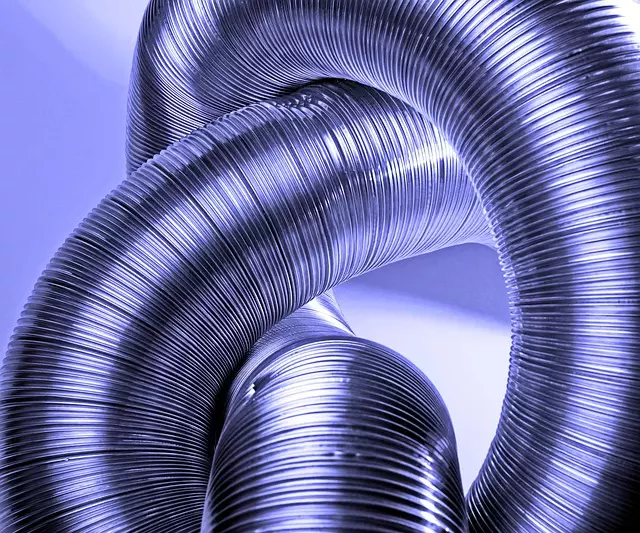Industrial ventilation systems play a critical role in maintaining optimal workplace air quality and ensuring employee safety by controlling heat, dust, fumes, and contaminants. Compliance with global occupational health administration standards prevents respiratory illnesses, improves worker health, and enhances productivity. Effective management involves installation, maintenance, monitoring, and optimization to meet evolving needs. Smart ventilation systems, powered by sensors and AI, automatically adjust airflow based on real-time data, ensuring excellent indoor air quality (IAQ) while adhering to OSHA guidelines for enhanced workplace safety. The future of workplace air quality management lies in the integration of advanced technologies with industrial ventilation systems, driven by growing awareness of indoor air pollution and demand for intelligent solutions.
“In today’s digital age, the integration of building automation is reshaping industrial workspaces. This article delves into the vital role of industrial ventilation systems in ensuring workplace safety and enhancing employee productivity through air quality management. We explore ventilation safety standards and how their adherence facilitates efficient and secure environments. By examining smart ventilation systems, we uncover benefits and challenges in implementing automated controls while also looking ahead to future trends driven by advanced technologies in ventilation management.”
- Understanding Industrial Ventilation Systems and Their Role in Workplace Safety
- The Impact of Air Quality Management on Employee Health and Productivity
- Ventilation Safety Standards: A Comprehensive Overview
- Integrating Building Automation for Efficient and Safe Workspaces
- Benefits of Smart Ventilation Systems in Modern Industries
- Challenges and Considerations in Implementing Automated Ventilation Controls
- Future Trends: Enhancing Ventilation Management with Advanced Technologies
Understanding Industrial Ventilation Systems and Their Role in Workplace Safety
Industrial ventilation systems play a pivotal role in ensuring workplace safety and maintaining optimal air quality. These sophisticated systems are designed to control and manage the airflow within industrial settings, where various processes and machinery generate heat, dust, fumes, and other harmful contaminants. By efficiently circulating and filtering the air, these systems help prevent the buildup of hazardous gases, reduce employee exposure to noxious substances, and maintain a comfortable working environment.
Effective ventilation is crucial in adhering to strict ventilation safety standards, such as those set by occupational health and safety administrations worldwide. Properly integrated industrial ventilation systems can significantly decrease the risk of respiratory illnesses, improve overall worker health, and enhance productivity by creating a safer and more conducive work atmosphere. This integration involves not just the physical installation but also regular maintenance, advanced monitoring systems, and continuous optimization to meet evolving workplace air quality management needs.
The Impact of Air Quality Management on Employee Health and Productivity
The impact of workplace air quality on employee health and productivity cannot be overstated. In industrial settings, where indoor environments are often more complex than residential spaces, proper ventilation becomes a critical component of maintaining a healthy and productive workforce. Industrial ventilation systems play a pivotal role in controlling airborne contaminants, ensuring optimal air quality that supports worker well-being and enhances overall productivity.
Effective workplace air quality management involves adhering to stringent ventilation safety standards. These standards dictate the design, installation, and maintenance of industrial ventilation systems to mitigate risks associated with various hazards present in manufacturing environments. By prioritizing these practices, organizations can foster a positive work environment where employees are protected from respiratory issues, reduce sick leave, and experience improved cognitive functions, ultimately contributing to increased job satisfaction and organizational success.
Ventilation Safety Standards: A Comprehensive Overview
Ventilation Safety Standards play a critical role in ensuring workplace air quality management, especially within industrial settings where complex processes and machinery are at work. These standards govern the design, installation, and maintenance of industrial ventilation systems to mitigate risks associated with poor air quality. Compliance is essential to prevent health issues among workers and to meet regulatory requirements.
Key aspects covered by these standards include proper exhaust system placement to eliminate hazardous fumes and dust, adequate airflow rates to maintain safe levels of contaminants, and regular inspections to ensure continuous effectiveness. By adhering to ventilation safety standards, industrial facilities can create a healthier work environment, enhancing employee well-being and productivity while also avoiding potential legal consequences stemming from non-compliance.
Integrating Building Automation for Efficient and Safe Workspaces
Integrating Building Automation for Efficient and Safe Workspaces
In today’s digital era, building automation integration is transforming the way we design and manage workspaces. By seamlessly incorporating industrial ventilation systems and advanced air quality management technologies, facilities can achieve optimal efficiency while ensuring workplace safety. Automated controls allow for precise adjustments in ventilation rates based on occupancy levels, temperature, and humidity, enhancing both comfort and energy conservation.
This integration goes beyond mere convenience; it adheres to stringent ventilation safety standards, ensuring clean and healthy air in all work environments. Automated systems can monitor and maintain desired air exchanges per hour, detect and alert for potential issues like carbon monoxide buildup or inadequate fresh air supply, and even regulate temperature and humidity levels within set ranges. Such proactive management of workplace air quality contributes significantly to employee well-being and overall productivity.
Benefits of Smart Ventilation Systems in Modern Industries
Smart ventilation systems are transforming modern industries by offering numerous benefits that go beyond basic functionality. These advanced industrial ventilation solutions integrate building automation to optimize air quality, enhancing workplace safety and productivity. By leveraging sensors and AI, smart vents can automatically adjust airflow based on occupancy levels, environmental conditions, and even the presence of pollutants or allergens. This real-time data-driven approach ensures optimal ventilation rates, reducing energy costs while maintaining excellent indoor air quality (IAQ).
Furthermore, compliance with ventilation safety standards becomes more manageable with automated systems. They can monitor and enforce adherence to regulations like OSHA guidelines, ensuring a safer working environment for employees. The integration of smart ventilation into building automation allows for remote monitoring and control, enabling facility managers to address issues promptly. This proactive management reduces downtime and minimizes the risk of respiratory health issues among workers, contributing to a healthier, more productive industrial setting.
Challenges and Considerations in Implementing Automated Ventilation Controls
Implementing automated ventilation controls in industrial settings presents a host of challenges and considerations, especially when balancing workplace efficiency with air quality management and ventilation safety standards. One key obstacle is ensuring the system accurately detects and responds to changes in environmental conditions, such as occupancy levels, temperature, and humidity fluctuations, without compromising on worker safety.
Another critical aspect involves integrating these automated systems seamlessly into existing industrial ventilation structures. This requires meticulous planning and understanding of the facility’s layout and airflow patterns to avoid costly retrofits or system malfunctions. Adhering to strict ventilation safety standards while leveraging technology for optimal air quality management demands a delicate balance, necessitating expert consultation and regular maintenance to ensure continuous compliance.
Future Trends: Enhancing Ventilation Management with Advanced Technologies
The future of workplace air quality management lies in the seamless integration of advanced technologies with industrial ventilation systems. As awareness of indoor air pollution and its impact on health continues to grow, so does the demand for intelligent solutions. Automation offers a promising path forward by enabling precise control and monitoring of ventilation processes. Smart sensors and connected devices can detect changes in air quality, temperature, and humidity levels, allowing for dynamic adjustments to ventilation systems. This not only enhances comfort and productivity but also contributes to energy efficiency by preventing unnecessary operation.
Furthermore, integrating advanced technologies with industrial ventilation systems is crucial for maintaining ventilation safety standards. Automated systems can ensure optimal airflow, reducing the risk of hazardous conditions that may arise from stagnant air or poor circulation. With real-time data and predictive analytics, facilities managers can proactively address potential issues before they escalate. This proactive approach to ventilation management fosters a safer and healthier workplace environment, aligning with evolving industry regulations and best practices.


